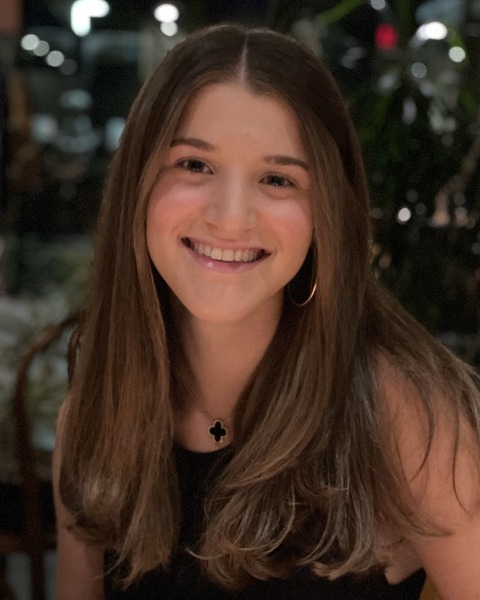Electro/physiology (E)
PP507 - Underlying Mechanisms of SPiN Variability in Listeners with Normal Hearing

Gabrielle Kasten
Doctor of Audiology Student
University of Texas at Austin
University of Texas at Austin
Austin, TexasDisclosure(s): No financial or nonfinancial relationships to disclose.

Julia Campbell, AuD, PhD
Clinical Associate Professor and Primary Investigator
The University of Texas at Austin, Department of Speech, Language, and Hearing Sciences and the Central Sensory Processes Laboratory
austin, TexasDisclosure(s): No financial or nonfinancial relationships to disclose.

Lauren Ralston, Au.D. (she/her/hers)
Clinical Audiologist and Ph.D. Student
The University of Texas at Austin, Department of Speech, Language, and Hearing Sciences Central Sensory Processes Laboratory Austin Ear, Nose, and Throat Clinic - Neurotology/Otology
Austin, TexasDisclosure(s): No financial or nonfinancial relationships to disclose.
Lead Presenter(s)
Contributor(s)
Audiological patients report difficulty hearing in noise despite normal hearing test results. Decreased wave I amplitude of the auditory brainstem response has been linked with synaptopathy. Another factor is sensory gating. This automatic filtering mechanism may suppress repetitive noise, but if deficient, is linked with worse speech-perception-in-noise (SPiN). It’s unknown if these two factors are related or separate in contributing to SPiN. Our project aims to examine the relationship between peripheral function or possible synaptopathy, central gating function, and SPiN outcomes in normal-hearing listeners to determine whether an interaction between subclinical peripheral deficits and central function may affect SPiN ability.
Summary:
A common complaint is that individuals struggle to hear in the presence of background noise, yet when they receive a standard hearing test, results appear normal.
Recent research suggests several factors that may contribute to speech perception-in-noise (SPiN) variability that conventional audiometry cannot measure. One factor is cochlear synaptopathy (CS) or “hidden hearing loss,” which consists of acute loss of afferent nerve terminals between the inner hair cells and post-synaptic nerve terminals and delayed cochlear nerve degeneration. CS may be measured through decreased wave I amplitude of the ABR, which represents neural firing in cranial nerve VIII (Kujawa and Liberman, 2009).
Another factor that has been implicated in SPiN in normal hearing is decreased central inhibition (Campbell et al., 2023; Janse, 2012). Inhibition provides suppression of irrelevant or non-target stimuli, which is important for processing speech information in background noise (Janse, 2012). This mechanism can be evaluated using the cortical auditory evoked potential (CAEP) gating response to identical pairs of acoustic stimuli. Typical gating should show a significant decrease in the CAEP response to the second stimulus in the pair (S2) versus the first (S1), as the stimulus is deemed non-novel (Javitt and Freedman, 2015).
Specific Aim 1: To record wave I via ABR in normal-hearing listeners with and without SPiN deficits. For this specific aim, we used a 13.3-sec click presented monaurally at 80 dB and 70 dB nHL in listeners with and without SPiN deficits. This decreased stimulus rate and increased stimulus intensity were chosen in an attempt to ensure that wave I was enhanced (Kamerer et al., 2020). We hypothesize that listeners with SPiN deficits will show a significantly atypical wave I.
Specific Aim 2: To examine sensory gating via CAEPs in normal-hearing listeners with and without SPiN deficits. Gating stimuli consisted of 250 Hz tonal pairs presented at 50 dB HL in soundfield. We hypothesize that listeners with SPiN deficits will show a significantly worse gating response via amplitude difference values.
Specific Aim 3: To determine whether synaptopathy and gating may interact (i.e., evidence of synaptopathy and gating deficits are related, resulting in worse SPiN) or whether these are separate mechanisms. Based on pilot data, we hypothesize that these peripheral and central mechanisms operate independently in contributing to SPiN in normal hearing.
Learning Objectives:
- Upon completion, participants will be able to examine the relationship between peripheral function, central function, and SPiN outcomes in normal-hearing listeners, including interactions between these variables.
